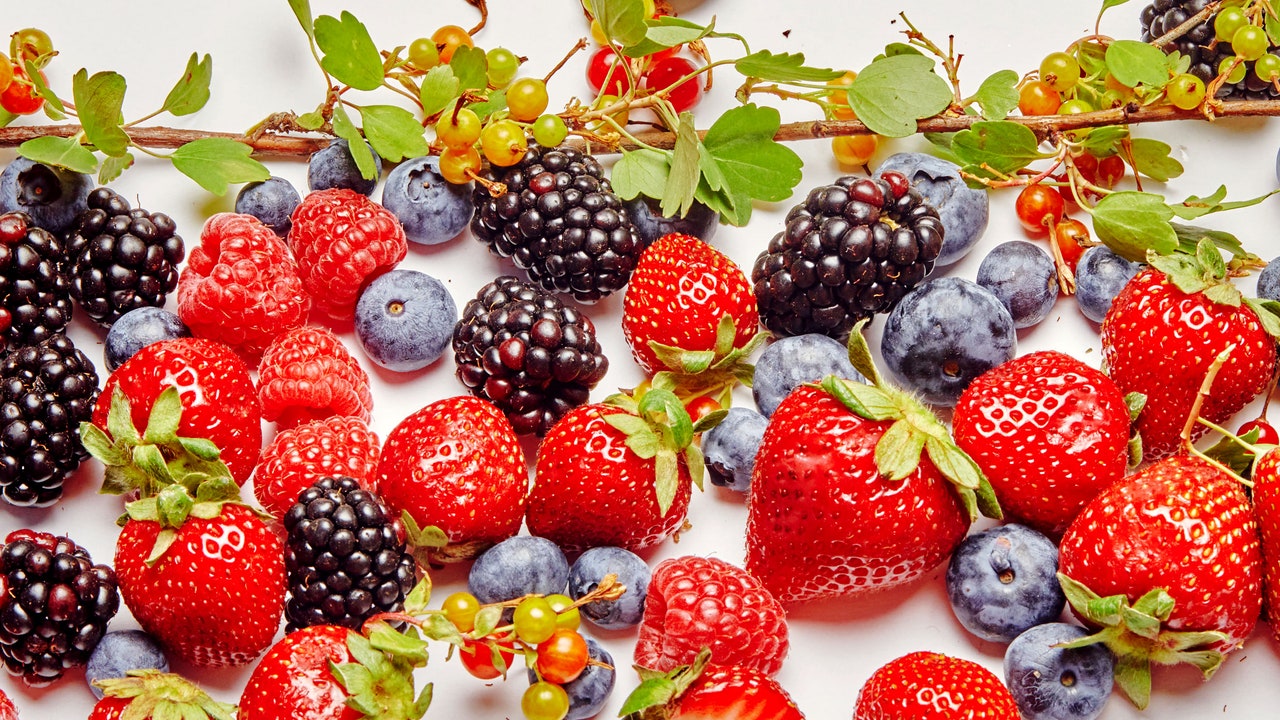No one wants to spend their Saturday stalking the farmers market for beautiful berries that are moldy come Monday. These tips on how to store strawberries, blueberries, raspberries, and blackberries will help you to mitigate the madness of quickly perishing produce once and for all. With just a little extra effort up front, you’ll save money, prevent food waste, and keep your peak season berries fresh long enough to enjoy them out of hand or ready to use in berry desserts and treats all season long.
Select the best berries from the bunch
Whether you’re purchasing them from a grocery store or picking them yourself, selecting the best berries is key to their longevity. Because berries are fragile fruits that are thin-skinned, one moldy strawberry can turn the whole bunch. Pick out and discard any that are already bruised, slimy, or spoiled. If you’re noticing blackberry stains on the clamshell container or strawberry juices pooling at the bottom of the carton, it’s a good indicator that there are a couple berries past their prime in the mix. Instead, seek out firm, plump, shiny berries. If you’ve already got some squished berries on hand, don’t waste them: Save them for smoothies, make a breezy berry compote to top pancakes, or soak and mash in rum for a tangy, syrupy ice cream topping.
Give your berries the spa treatment
Washing strawberries before use may seem counterintuitive—we know that moisture and dampness are the enemy when storing produce—but giving them a quick vinegar bath (with a diluted vinegar solution of 3 cups of water to 2 Tbsp. white vinegar) as soon as you’re home from the market will kill any existing mold spores and extend your fresh strawberries’ shelf life. Rinse thoroughly to remove any lingering vinegar taste, then dry the berries gently to avoid bruising.
Don’t crowd your berries when storing
Crowded berries get smushed easily, leading to speedier spoilage. After washing, instead of returning your berries to their original packaging, let them breathe by storing fresh strawberries in a wide, flat container lined with paper towels. Then cover the container with a loose-fitting lid to let excess moisture (a breeding ground for bacteria) escape. You don’t want to use airtight containers here. For easy and efficient storage—sans paper towels—use produce-specific storage containers that promote airflow to help keep those berries fresh. We like the Oxo Good Grips GreenSaver Produce Keeper, which has an elevated, removable colander that lifts produce up from the container walls for max airflow and minimal berry rotting. This produce keeper also has a carbon filter that traps and absorbs ethylene gas (a plant hormone that speeds up the ripening and rotting process). Think of it as a mini refrigerator crisper drawer with adjustable vents to maintain optimum moisture levels for your fruits and veggies.
If you really want to ensure prolonged freshness, toss a sheet of FreshPaper into the container before putting your berries in the fridge. These compostable paper sheets are infused with organic spices (like fenugreek) that are naturally antibacterial and antifungal, which help offset spoilage.
Another pro tip: Avoid storing berries in the coldest corner zones of your fridge where they’re at risk of getting frostbitten. Instead, store them front and center where the temperature is less frigid. (This also helps to keep them top of mind, ensuring you remember to enjoy them sooner rather than later.)
Freeze them for later
Even when you know how to store strawberries, blueberries, and blackberries properly in the fridge, you still might find yourself overwhelmed by more fruit than you can possibly use. If you’re blessed with an abundance of fresh berries that you absolutely know you won’t be able to enjoy before they spoil, stash them in the freezer for long-term storage. All the same rules apply: Select only the best berries, toss out the spoiled ones, rinse them in vinegar diluted with cold water, and carefully and thoroughly pat dry. Note: In most cases you’ll want to freeze whole berries, but if you’re freezing strawberries, we recommend you hull them first for ease of use later.
For better results with your frozen strawberries, start by spreading them out into a single layer on a baking sheet and freezing until solid. Then you can put them in a sealable bag before storing them in the freezer for six months to a year. If you’re looking for reusable freezer bags, consider the silicone ziptop bags we use for (almost) everything—they stand up by themselves and are dishwasher safe. To prevent freezer burn and keep your berries in tip-top shape, be careful to remove as much air as possible from the bags before freezing. The best way to remove 100% of the air is to use a vacuum sealer, like the Zwilling Fresh & Save, which we use regularly with both plastic bags and glass containers.


